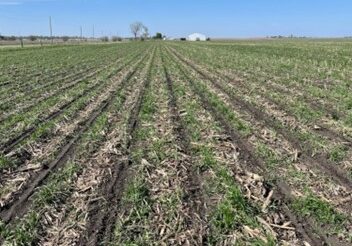Recent News
Considerations for Overwintering Barley
As farmers emerge from winter and go about spring field activities, those who use cover crops are also evaluating their stands for success in establishment and overwintering. This year we are seeing more instances of certain species not overwintering as well as we might like. Barley is a winter cereal grain that has seen increased interest as a cover crop...
Considerations to take for Fall Cover Crop Seed Application
Cover crop seeding for corn and soybeans is just around the corner, so it's time to give some consideration to how you will get them applied this fall. There are several ways to seed cover crops, each with its own benefits and drawbacks. You will need to learn what works best for you, your soil, climate, cropping system, and operation....
Last Minute Cover Crop Termination Tips
The following article discusses termination timing, assuming termination with herbicides. The information may not relate to termination by other means. Generally, we are considering an overwintering cereal cover crop, such as cereal rye. What do we mean when we discuss “timing” for termination of cover crops? There are a few different considerations. Making the right herbicide applications based on the...
Understanding Cover Crop Classifications, Seed Selection, and Mixes
This article is part of a series on cover crop species selection by ISAP’s Soil Health Specialist, Jim Isermann. The first article provided a general introduction to cover crops and highlighted important considerations for determining which cover crops will be the best addition to a cropping system and a specific farmer’s operation, and future articles will focus on individual cover...
ISAP Soil Health Specialist Offers Advice on Cover Crop Species Selection
Let’s look at cover crop species selection: Even though we commonly hear about farmers being encouraged to plant “cover crops”, cover crops are not one single species or crop. Anyone following the conservation movement has heard of at least a few of the different options available: Cereal rye, Tillage Radishes, Crimson Clover, and perhaps you remember someone in your family...




